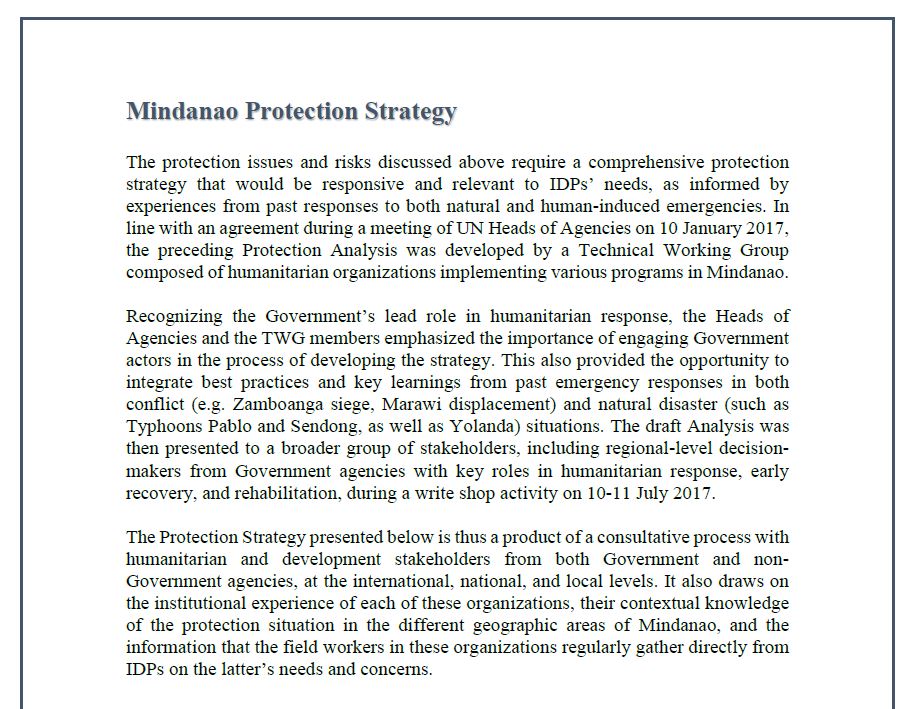Mindanao Protection Strategy
The protection issues and risks discussed above require a comprehensive protection strategy that would be responsive and relevant to IDPs’ needs, as informed by experiences from past responses to both natural and human-induced emergencies. In line with an agreement during a meeting of UN Heads of Agencies on 10 January 2017, the preceding Protection Analysis was developed by a Technical Working Group composed of humanitarian organizations implementing various programs in Mindanao.
Recognizing the Government’s lead role in humanitarian response, the Heads of Agencies and the TWG members emphasized the importance of engaging Government actors in the process of developing the strategy. This also provided the opportunity to integrate best practices and key learnings from past emergency responses in both conflict (e.g. Zamboanga siege, Marawi displacement) and natural disaster (such as Typhoons Pablo and Sendong, as well as Yolanda) situations. The draft Analysis was then presented to a broader group of stakeholders, including regional-level decision-makers from Government agencies with key roles in humanitarian response, early recovery, and rehabilitation, during a write shop activity on 10-11 July 2017.
The Protection Strategy presented below is thus a product of a consultative process with humanitarian and development stakeholders from both Government and non-Government agencies, at the international, national, and local levels. It also draws on the institutional experience of each of these organizations, their contextual knowledge of the protection situation in the different geographic areas of Mindanao, and the information that the field workers in these organizations regularly gather directly from IDPs on the latter’s needs and concerns.

